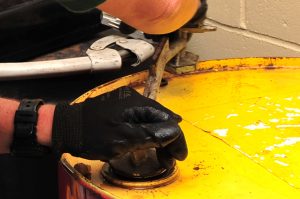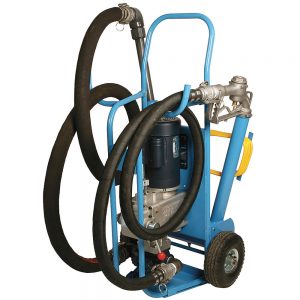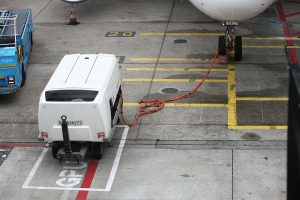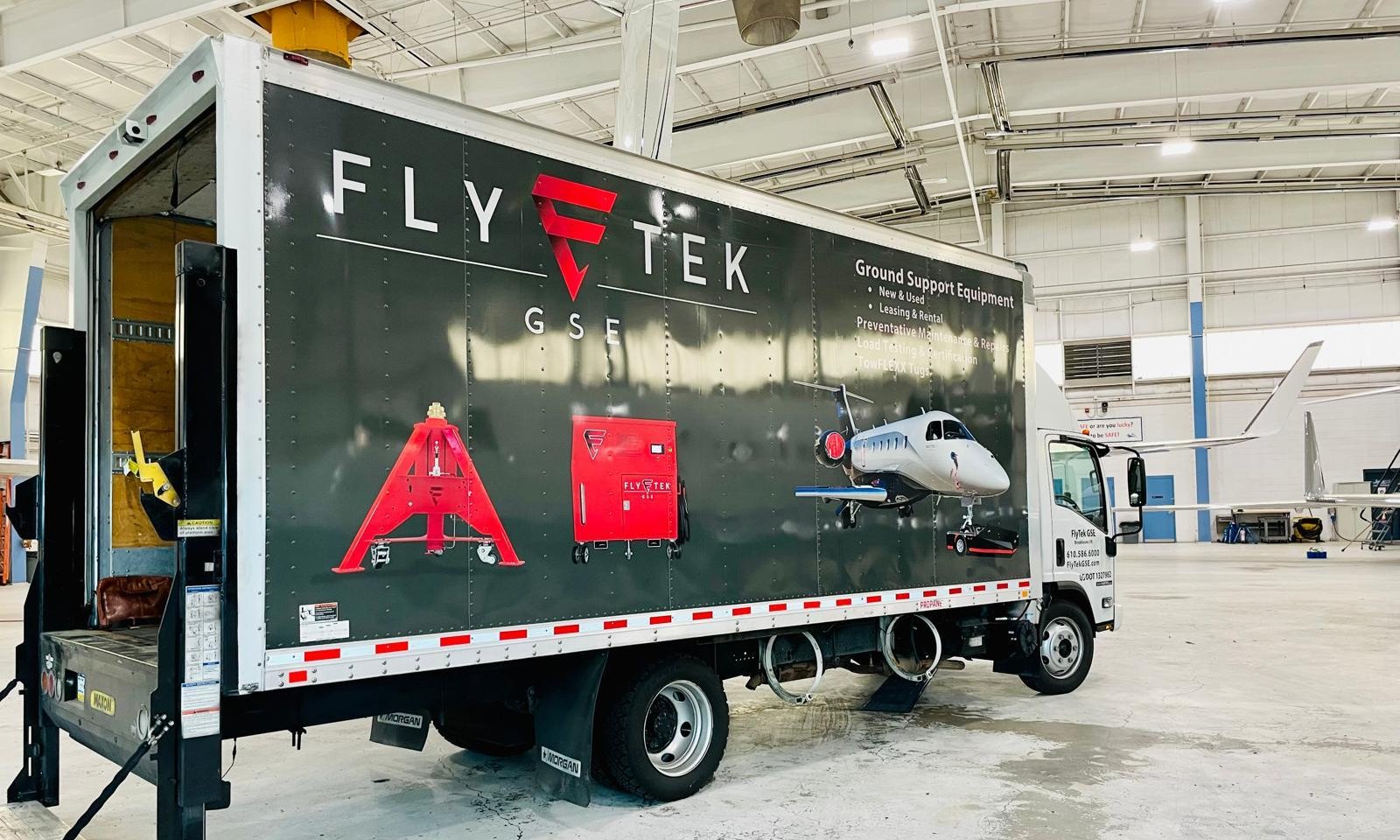One of the most important aspects of maintaining your hydraulic power units (HPU’s) is fluid cleanliness. No matter how well-designed the HPU may be, it is still susceptible to hydraulic contamination. Fluid contamination is a major issue for HPU’s and all ground service equipment because it not only decreases the reliability of the system but also results in higher maintenance costs.
Hydraulic power units are designed for testing aircraft hydraulic systems by supplying hydraulic fluid at variable pressures and flows. These units – also called mules – are capable of generating a tremendous amount of power.
Three Principal Categories of Hydraulic Fluids
The first step in developing a good understanding of hydraulic contamination and fluid cleanliness is to discuss the three main categories of hydraulic fluids: minerals, polyalphaolefins, and phosphate esters.
- Mineral-based hydraulic fluid is the oldest form of hydraulic fluid and is processed from petroleum. It is primarily used where fire hazards are low.
- Polyalphaolefins are fire-resistant hydrogenated polyalphaolefin-based fluids and were developed as a more flame resistant alternative to mineral-based fluids. Mineral-based hydraulic fluids and polyalphaolefins are compatible and can be used in the same system.
- Phosphate esters are commonly used in commercial transport aircraft and, while they are extremely fire resistant, they can burn under certain conditions. It is important to remember that petroleum-based hydraulic fluids and phosphate ester-based hydraulic fluids are not compatible with each other. If the wrong type of fluid is added to an aircraft hydraulic system, the system should be drained and flushed.
Types of Hydraulic Fluid Contamination
Fluid contamination can be defined as the presence of foreign matter in hydraulic fluid. That foreign matter may be visible to the naked eye, such as rust or particles of shredded seals, or it may be too small to see without instrumentation. Regardless of the level of contamination, if it is left unchecked it will adversely affect a hydraulic power unit.
One way of differentiating between types of hydraulic contamination is based on whether it is abrasive or non-abrasive. Abrasive contamination includes particles such as rust flakes, remnants of core sand, slivers of metal, or weld spatter. It’s obvious how damaging abrasive contamination is, but non-abrasive contamination can be just as lethal to a hydraulic system. Non-abrasive contaminants include the byproducts of oil oxidation and soft particles from worn, shredded, or degrading seals. Contaminants can also include reactions involving additives, free water, and hydrolysis products.
Checking for Hydraulic Contamination
Testing for contamination in your mules should take place when either the system has operated at temperatures higher than recommended, when actual contamination is suspected, or according to the manufacturer’s recommendation. A visual check alone of the hydraulic fluid is not enough to determine whether contamination is present, since many types of contamination are not visible to the naked eye.
A sound contamination check requires sampling the fluid itself in accordance with manufacturer recommendations. In addition, samples should be taken at various points in the system to determine the source of the contamination — checking the fluid reservoir only is not sufficient.
Hydraulic Contamination Control
Contamination control is a major issue in HPU’s and ground support equipment in general and involves more than just detecting the presence of contamination. One of the key points to understand about contamination control is this: just because something is brand new does not automatically mean it is not contaminated. New fluid should be filtered prior to being used in any HPU or aircraft.
Most new hydraulic fluid comes out of the drum with some degree of contamination, which is why all hydraulic fluid should be filtered before it is used. Because it is the same fluid that is transferred into the aircraft, it is extremely important that the fluid meets or exceeds the requirement for that aircraft. A sample should also be taken prior to connecting an HPU to another aircraft, otherwise contamination can be transferred from one aircraft to another. If contamination travels from one aircraft to another, it is very difficult to identify the source of the contamination.
Suggested hydraulic fluid cleanliness standards can be found in ISO 4406 Class 20/18/15 and NAS 1638 Class 9 standards.
To understand contamination control, it is vital to have a good idea of the most common sources of hydraulic contamination, including:
- Contamination that was built-in during either the manufacturing or assembly of hydraulic systems (e.g., core sand left over from sand casting);
- Contamination that was introduced to the system during the handling and/or transfer of hydraulic fluid;
- Contamination generated during operation of the hydraulic system;
- Contamination that finds its source in storage at refineries and mixers who may have very little control over how the fluid is stored; and
- Contamination that has been ingested into the hydraulic system during regular operation.
Preventing and Controlling Fluid Contamination
To keep hydraulic contamination under control, levels in hydraulic fluid should be monitored on a regular basis. All fluid should be filtered by a fluid servicing cart or servicing unit before it is put in use.
Filters and filter elements should be replaced – not only cleaned, but replaced – according to manufacturer guidelines. Replacement filters should only include those that are recommended by the manufacturer. When new filters are added to the system to replace old ones, they should not be removed from their packaging until immediately prior to installation.
Keep in mind that filter changes may be required more often depending on the results of the contamination analysis of the fluids. Whenever the material inside the reservoir takes on a pink or reddish hue, replace the desiccant air filter.
There are some simple precautions to take during maintenance and repair of hydraulic power units to minimize the chances of contaminating hydraulic fluid:
- Before disconnecting any hydraulic fittings or lines, clean the area with a dry solvent;
- Before assembling any components, clean them in an approved dry solvent, then dry them and lubricate as required.
- All workbenches and tools along with all hydraulic servicing equipment should be kept clean.
- Use only lint-free, clean cloths.
- Always use couplings specific to each piece of ground support equipment, and clean the couplings and hose ends before installing them.
- After every use, clean the couplings carefully with a dust free rag and do not forget to install dust caps.
- Avoid dropping couplings or allowing them to drag along the ground.
- When the presence of contamination has been determined and the source has been identified (if possible), then it is time to flush the HPU and replace the hydraulic fluid.
- Samples of the hydraulic fluid should be taken both before and after.
The Importance of Routine Maintenance
The value of routine maintenance of hydraulic power units should never be underestimated. A few maintenance tasks, performed regularly and with care, can save thousands of dollars in repair costs and equipment downtime.
Maintenance tasks related to hydraulic fluid contamination includes routine sampling (at least once a year or every 3,000 flight hours) of the hydraulic fluid. It also includes checking and replacing filters per the schedule recommended by the OEM. For example, pressure filters should be replaced about every 3,000 hours, case drain filters should be replaced every 600 hours, and return filters should be replaced approximately every 1,500 hours.
When you hire FlyTek GSE for maintenance of your hydraulic power units, our expert engineers and technicians work diligently to ensure that they are in excellent working order. Call us today to schedule maintenance of all of your ground support equipment, an investment that will save your business time and money in the long term.








